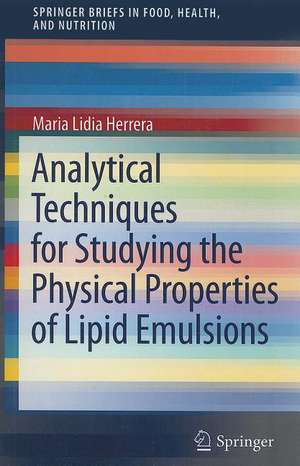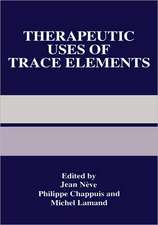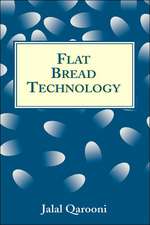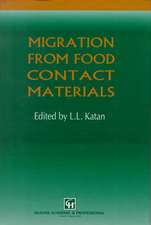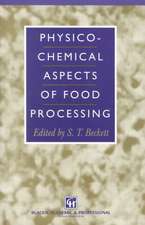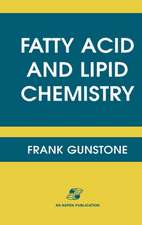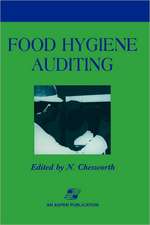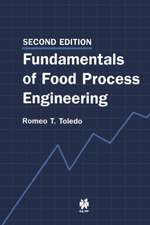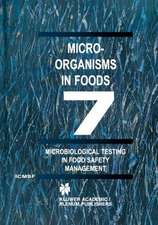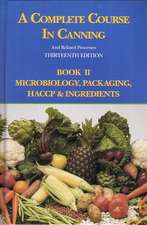Analytical Techniques for Studying the Physical Properties of Lipid Emulsions: SpringerBriefs in Food, Health, and Nutrition
Autor Maria Lidia Herreraen Limba Engleză Paperback – 7 mar 2012
Din seria SpringerBriefs in Food, Health, and Nutrition
-
 Preț: 378.12 lei
Preț: 378.12 lei -
 Preț: 381.00 lei
Preț: 381.00 lei -
 Preț: 408.82 lei
Preț: 408.82 lei -
 Preț: 380.07 lei
Preț: 380.07 lei -
 Preț: 471.95 lei
Preț: 471.95 lei -
 Preț: 377.18 lei
Preț: 377.18 lei -
 Preț: 379.09 lei
Preț: 379.09 lei -
 Preț: 379.09 lei
Preț: 379.09 lei -
 Preț: 374.46 lei
Preț: 374.46 lei -
 Preț: 374.46 lei
Preț: 374.46 lei -
 Preț: 377.18 lei
Preț: 377.18 lei -
 Preț: 375.45 lei
Preț: 375.45 lei -
 Preț: 374.85 lei
Preț: 374.85 lei -
 Preț: 377.18 lei
Preț: 377.18 lei - 20%
 Preț: 322.50 lei
Preț: 322.50 lei -
 Preț: 374.08 lei
Preț: 374.08 lei -
 Preț: 376.80 lei
Preț: 376.80 lei -
 Preț: 348.40 lei
Preț: 348.40 lei -
 Preț: 380.84 lei
Preț: 380.84 lei -
 Preț: 376.80 lei
Preț: 376.80 lei -
 Preț: 378.34 lei
Preț: 378.34 lei -
 Preț: 382.95 lei
Preț: 382.95 lei -
 Preț: 374.08 lei
Preț: 374.08 lei -
 Preț: 377.95 lei
Preț: 377.95 lei -
 Preț: 377.35 lei
Preț: 377.35 lei -
 Preț: 374.85 lei
Preț: 374.85 lei -
 Preț: 375.84 lei
Preț: 375.84 lei -
 Preț: 376.04 lei
Preț: 376.04 lei -
 Preț: 377.18 lei
Preț: 377.18 lei -
 Preț: 375.62 lei
Preț: 375.62 lei -
 Preț: 411.32 lei
Preț: 411.32 lei -
 Preț: 379.86 lei
Preț: 379.86 lei -
 Preț: 379.30 lei
Preț: 379.30 lei -
 Preț: 376.96 lei
Preț: 376.96 lei -
 Preț: 352.58 lei
Preț: 352.58 lei -
 Preț: 352.97 lei
Preț: 352.97 lei -
 Preț: 380.25 lei
Preț: 380.25 lei -
 Preț: 373.54 lei
Preț: 373.54 lei -
 Preț: 343.00 lei
Preț: 343.00 lei -
 Preț: 375.45 lei
Preț: 375.45 lei -
 Preț: 375.23 lei
Preț: 375.23 lei -
 Preț: 412.30 lei
Preț: 412.30 lei
Preț: 381.00 lei
Nou
Puncte Express: 572
Preț estimativ în valută:
72.91€ • 79.17$ • 61.25£
72.91€ • 79.17$ • 61.25£
Carte tipărită la comandă
Livrare economică 22 aprilie-06 mai
Preluare comenzi: 021 569.72.76
Specificații
ISBN-13: 9781461432555
ISBN-10: 1461432553
Pagini: 75
Ilustrații: VI, 66 p. 8 illus., 5 illus. in color.
Dimensiuni: 155 x 235 x 7 mm
Greutate: 0.25 kg
Ediția:2012
Editura: Springer Us
Colecția Springer
Seria SpringerBriefs in Food, Health, and Nutrition
Locul publicării:New York, NY, United States
ISBN-10: 1461432553
Pagini: 75
Ilustrații: VI, 66 p. 8 illus., 5 illus. in color.
Dimensiuni: 155 x 235 x 7 mm
Greutate: 0.25 kg
Ediția:2012
Editura: Springer Us
Colecția Springer
Seria SpringerBriefs in Food, Health, and Nutrition
Locul publicării:New York, NY, United States
Public țintă
Professional/practitionerCuprins
1. Introduction.- 2. Nano and Micro Food Emulsions.- 2.1. Methods of Formulation.- 2.2. Physical Chemical Properties.- 2.3. Structuring Food Emulsions.- 3. Methods for Stability Studies.- 3.1. Visual Observation.- 3.2. Rheological Methods.- 3.3. Ultrasound Profiling.- 3.4. Electroacoustic spectroscopy: Zeta Potential.- 3.5. Measurement of Surface Concentration.- 3.6. Microscropic Analysis.- 3.7. Nuclear Magnetic Resonance (NMR) Techniques.- 3.8. Optical Methods.
Textul de pe ultima copertă
Analytical Techniques for Studying the Physical Properties of Lipid Emulsions
Caracteristici
This book will review old and new methods to study emulsion stability and structure. Includes supplementary material: sn.pub/extras
